What are workflows?
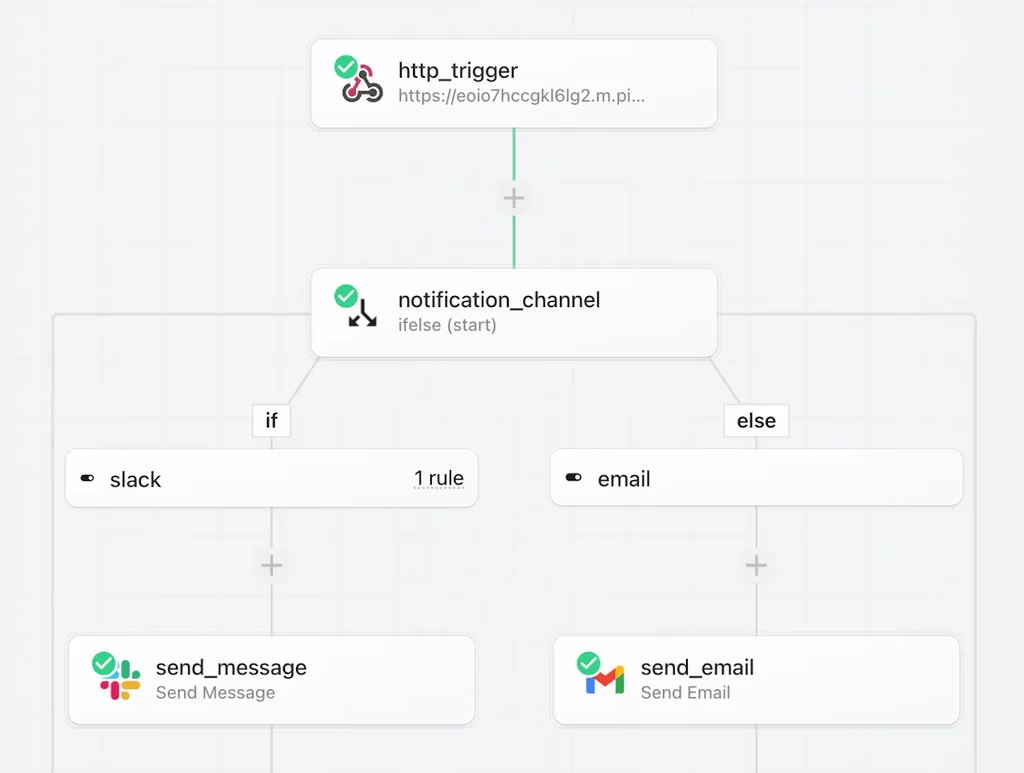
Getting started
1
Create a workflow
Create a new workflow or open an existing one.
2
Add an HTTP trigger
To get started building workflows for your end users:
- Add an HTTP trigger to your workflow
-
Generate a test event with the required headers:
x-pd-environment: developmentx-pd-external-user-id: {your_external_user_id}
3
Configure accounts to use your end users’ auth
When you configure pre-built actions or custom code that connects to third-party APIs, you can link accounts in one of two ways: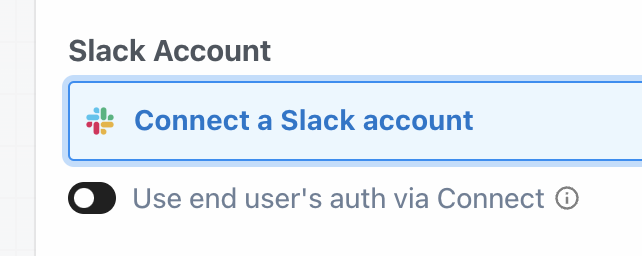

- Use your own account: If you’re connecting to an API that uses your own API key or developer account — for example, a workflow that connects to the OpenAI API or a PostgreSQL database — click the Connect account button to link your own, static account.

- Use your end users’ auth: If you’re building a workflow that connects to your end users’ accounts — for example, a workflow that sends a message with your user’s Slack account — you can select the option to Use end user’s auth via Connect:

4
Connect a test account
To run an end-to-end test as an end user, you need to have users and connected accounts in your project. If you already have a development account linked, you can skip this step.If you don’t, the fastest way to do this is on the Users tab in your Pipedream project:
- You’ll see there’s a button to Connect account
- Go through the flow and make sure to create the account in development mode
- Note the external user ID of the account you just connected, you’ll need it in the next step
5
Generate a test request
Test events are critical for developing workflows effectively. Without a test event, you won’t be able to test your workflow end to end in the builder, see the shape of the event data that triggers the workflow, and the lookup to use your end user’s auth won’t work.To generate a test event, click Send Test Event in the trigger, and fill in the event data. This will trigger the workflow and allow you to test the workflow end to end in the builder.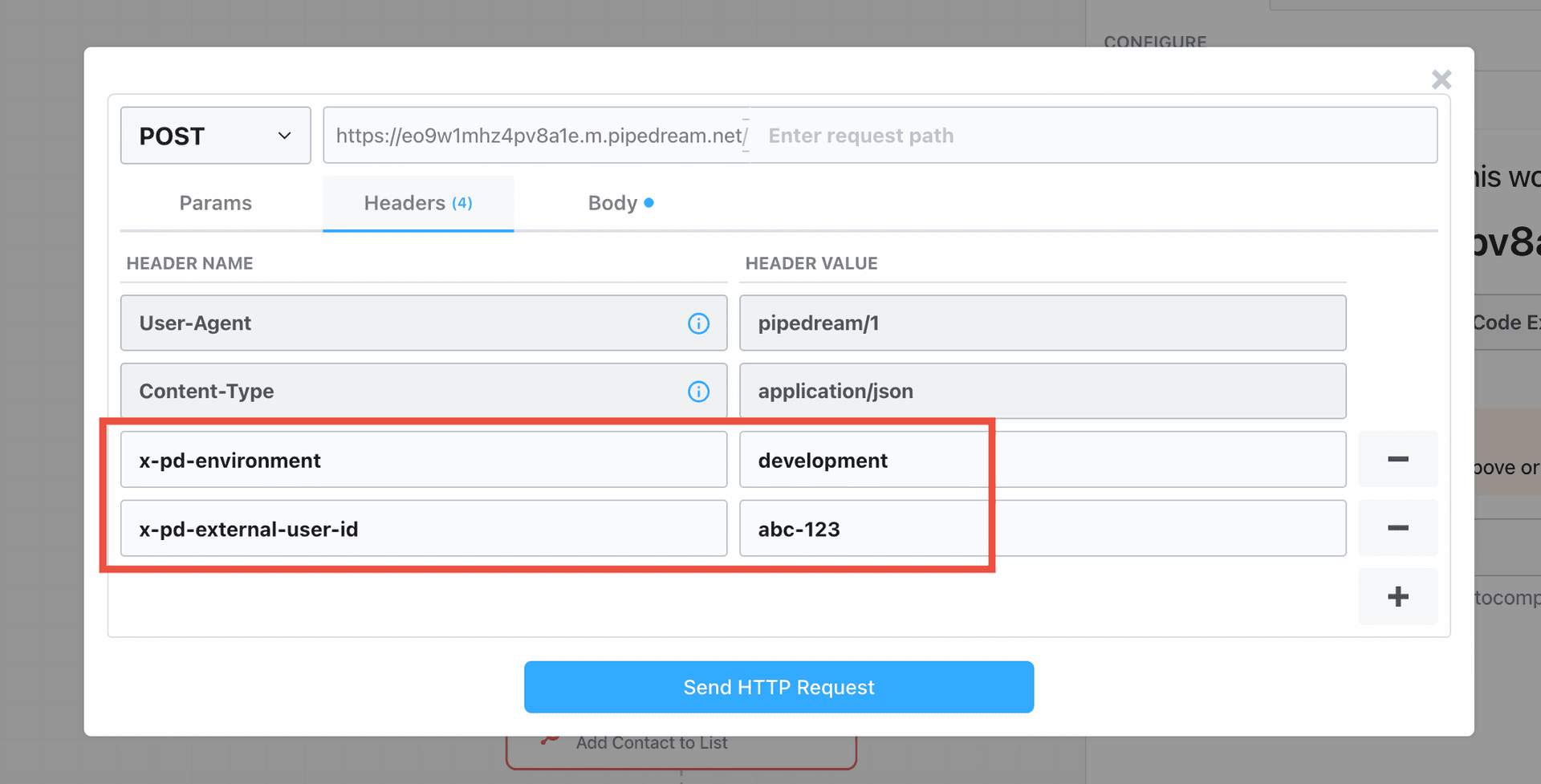
Make sure to include these headers in your test request:
x-pd-environment: developmentx-pd-external-user-id: {your_external_user_id}

6
Deploy your workflow
When you’re done with the workflow, click Deploy at the top right.
7
Invoke the workflow
If you’re using TypeScript or a JavaScript runtime, install the Pipedream SDK. Pipedream also provides an HTTP API for invoking workflows (see example below).To invoke workflows, you’ll need:
- The OAuth client ID and secret from your OAuth client in step 2 above (if configured)
- Your Project ID
- Your workflow’s HTTP endpoint URL
- The external user ID of the user you’d like to run the workflow for
- The Connect environment tied to the user’s account
Configuring workflow steps
When configuring a workflow that’s using your end user’s auth instead of your own, you’ll need to define most configuration fields manually in each step. For example, normally when you connect your own Google Sheets account directly in the builder, you can dynamically list all of the available sheets from a dropdown.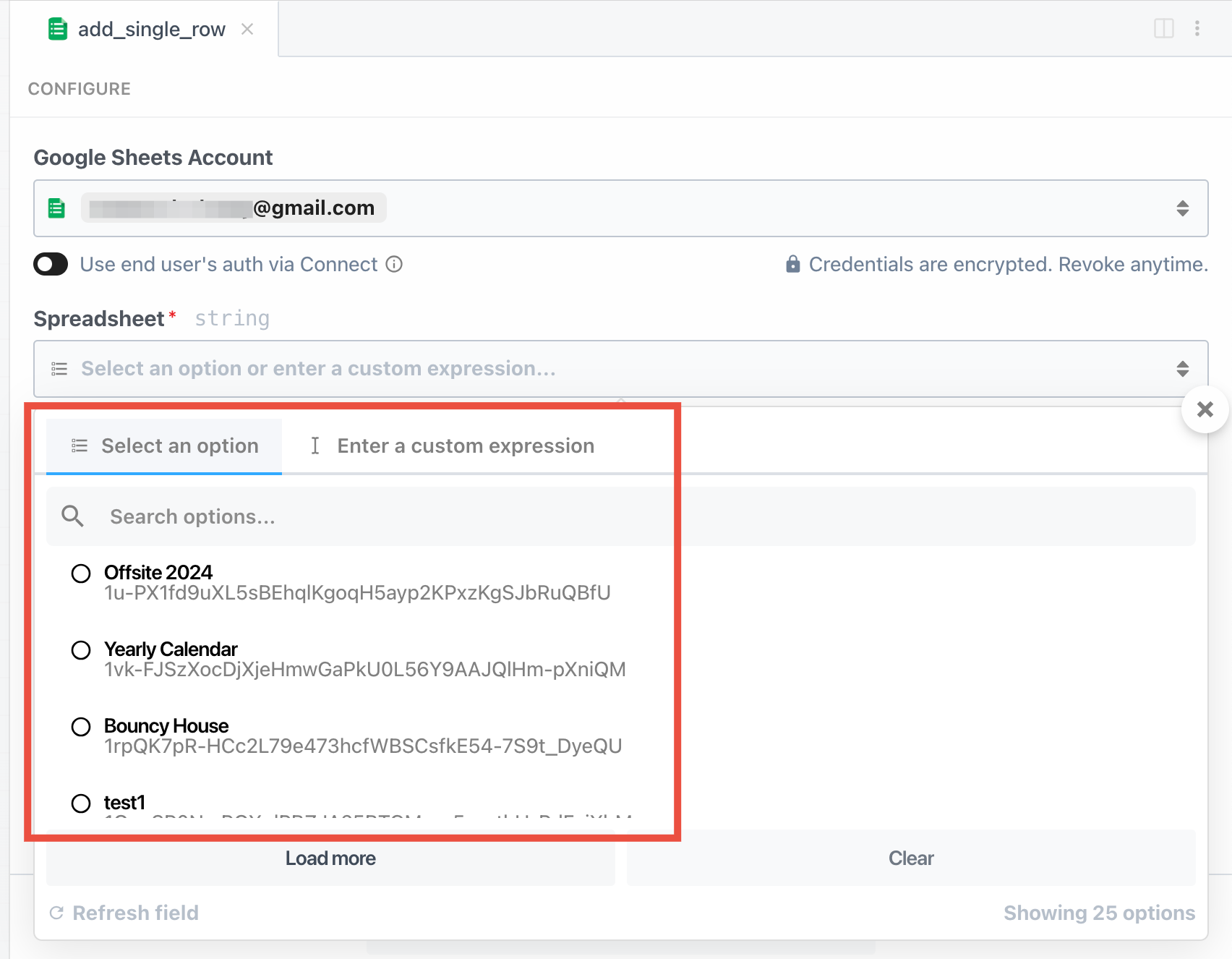
- Either make sure to pass all required configuration data when invoking the workflow, or add a step to your workflow that retrieve it from your database, etc. For example:
- Then in the Slack and GitHub steps, you’d reference those fields directly:
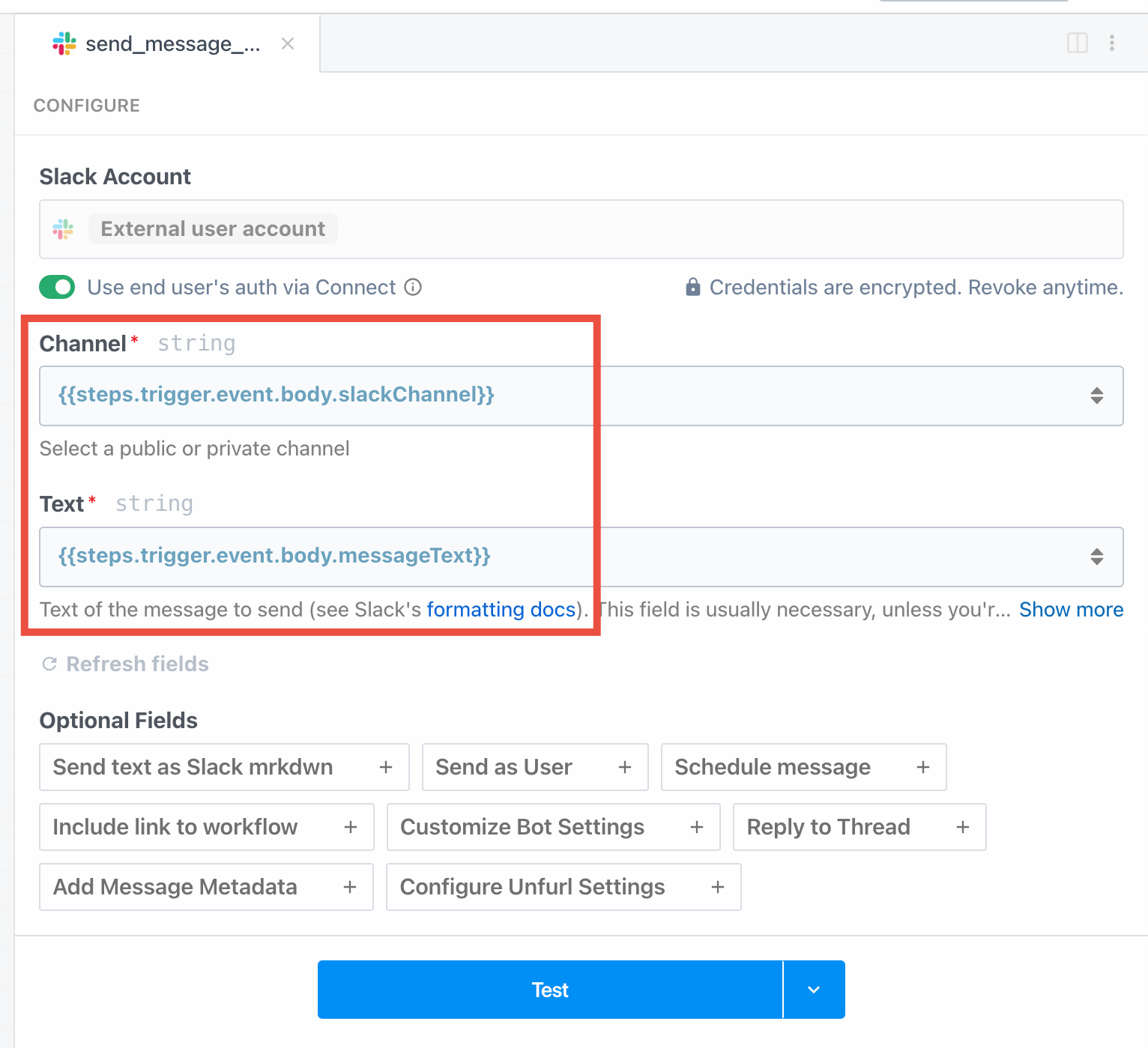
We plan to improve this interface in the future, and potentially allow developers to store end user metadata and configuration data alongside the connected account for your end users, so you won’t need to pass the data at runtime. Let us know if that’s a feature you’d like to see.
Testing
To test a step using the connected account of one of your end users in the builder, you’ll need a few things to be configured so that your workflow knows which account to use. Make sure you have an external user with the relevant connected account(s) saved to your project:- Go to the Users tab in the Connect section of your project to confirm
- If not, either connect one from your application or directly in the UI
- Once you’ve added an HTTP trigger to the workflow, click Generate test event
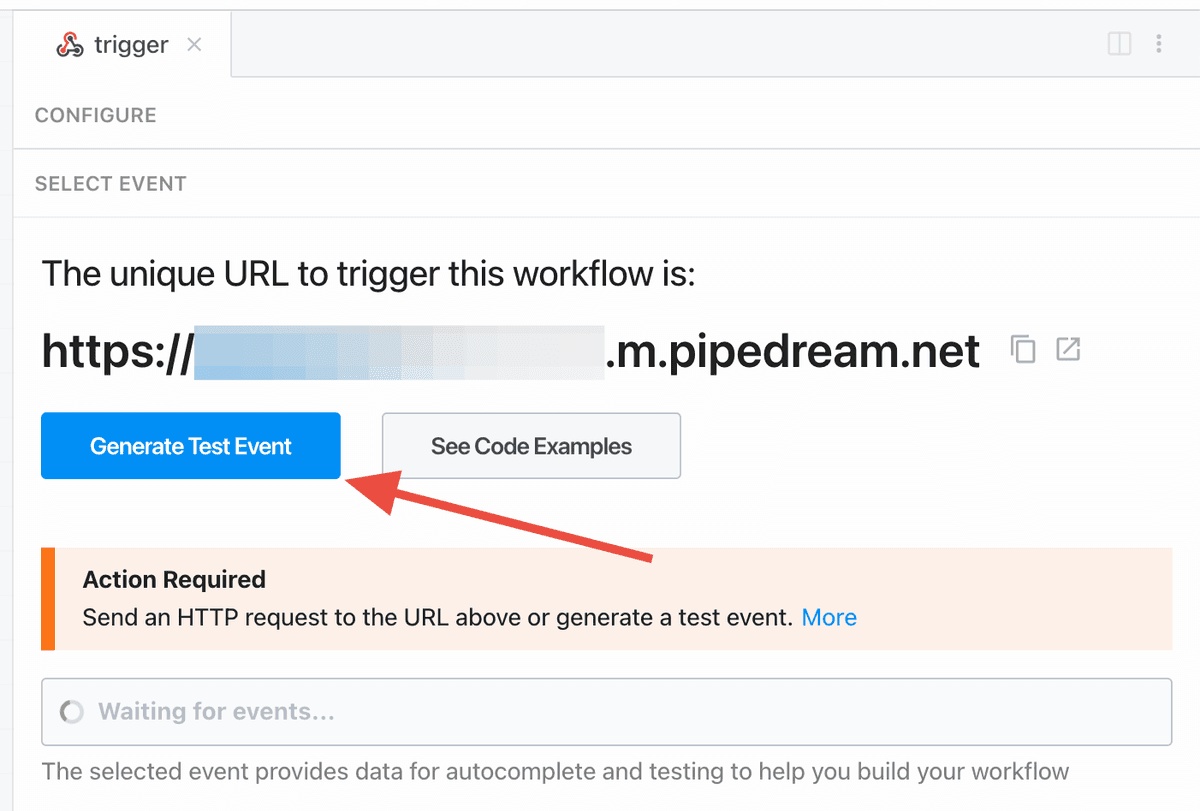
- Click on the Headers tab
- Make sure
x-pd-environmentis set (you’ll likely want todevelopment) - Make sure to also pass
x-pd-external-user-idwith the external user ID of the user you’d like to test with
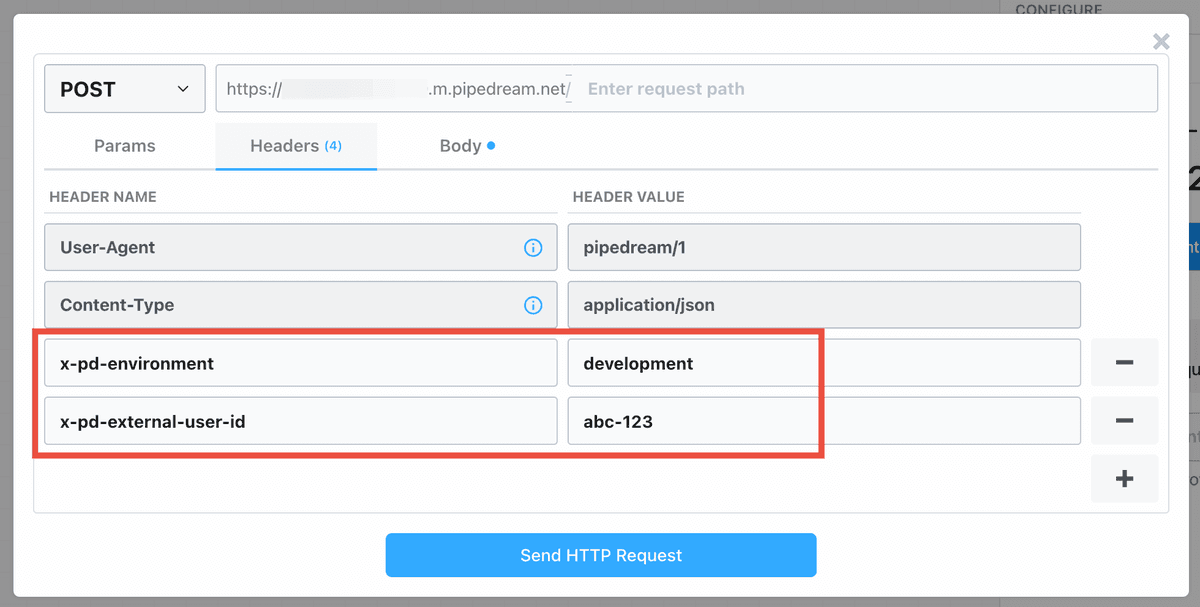
Triggering your workflow
You have two options for triggering workflows that run on behalf of your end users:- Invoke via HTTP webhook
- Deploy an event source (Slack, Gmail, etc.)
HTTP Webhook
The most common way to trigger workflows is via HTTP webhook. We strongly recommend creating a Pipedream OAuth client and authenticating inbound requests to your workflows.This section refers to authenticating requests to the Pipedream API. For info on how managed auth works for your end users, refer to the managed auth quickstart.
- OAuth client ID and secret for authenticating with the Pipedream API
- Your project ID
- Your workflow’s HTTP endpoint URL
- The external user ID of your end user
- The Connect environment
Deploy an event source
You can programmatically deploy triggers via the API to have events from integrated apps (like new Slack messages or new emails in Gmail) trigger your workflow. This allows you to:- Deploy triggers for specific users from your application
- Configure trigger parameters per-user
- Manage deployed triggers via the API
OAuth client requirements
When using OAuth apps (like Google Drive, Slack, Notion, etc.) with your end users, you must use your own custom OAuth clients.
- Register your own OAuth application with each third-party service (Google Drive, Slack, etc.)
- Add your OAuth client credentials to Pipedream
- Make sure to include your
oauthAppIdwhen connecting accounts for your end users
Troubleshooting
For help debugging issues with your workflow, you can return verbose error messages to the caller by configuring the HTTP trigger to Return a custom response from your workflow.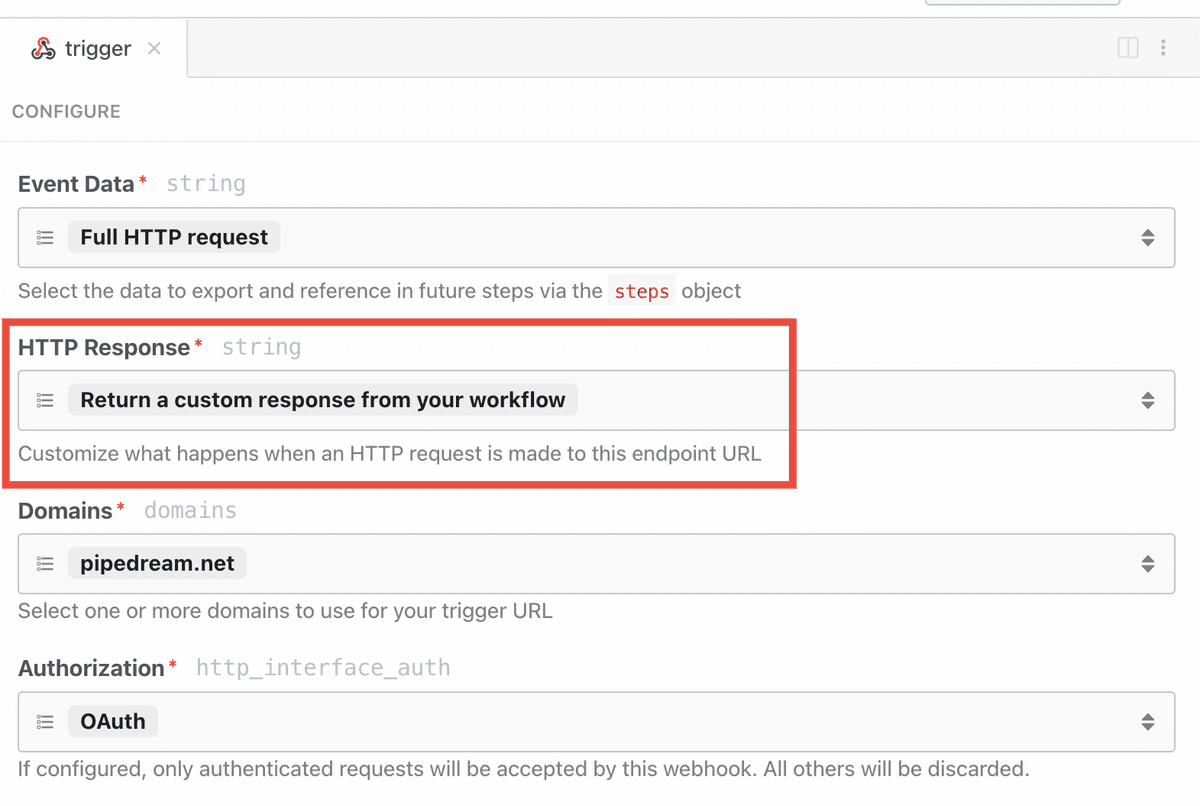
Common errors
No external user ID passed, but one or more steps require it
- One or more steps in the workflow are configured to Use end user’s auth via Connect, but no external user ID was passed when invoking the workflow.
- Refer to the docs to make sure you’re passing external user ID correctly when invoking the workflow.
No matching external user ID
- There was an external user ID passed, but it didn’t match any users in the project.
- Double-check that the external user ID that you passed when invoking the workflow matches one either in the UI or via the API.
Required account not found for external user ID
- The external user ID was passed when invoking the workflow, but the user doesn’t have a connected account for one or more of the apps that are configured to use it in this workflow execution.
- You can check which connected accounts are available for that user in the UI or via the API.
Running workflows for your users in production requires a higher tier plan
- Anyone is able to run workflows for your end users in
development. - Visit the pricing page for the latest info on using Connect in production.
Known limitations
Workflows can only use a single external user’s auth per execution
- Right now you cannot invoke a workflow to loop through many external user IDs within a single execution.
- You can only run a workflow for a single external user ID at a time (for now).
The external user ID to use during execution must be passed in the triggering event
- You can’t run a workflow on a timer for example, and look up the external user ID to use at runtime.
- The external user ID must be passed in the triggering event, typically via HTTP trigger.
Cannot use multiple accounts for the same app during a single execution
- If a user has multiple accounts for the same app (tied to a single external user), Pipedream will use the most recently created account.
- Learn about managing connected accounts for your end users.